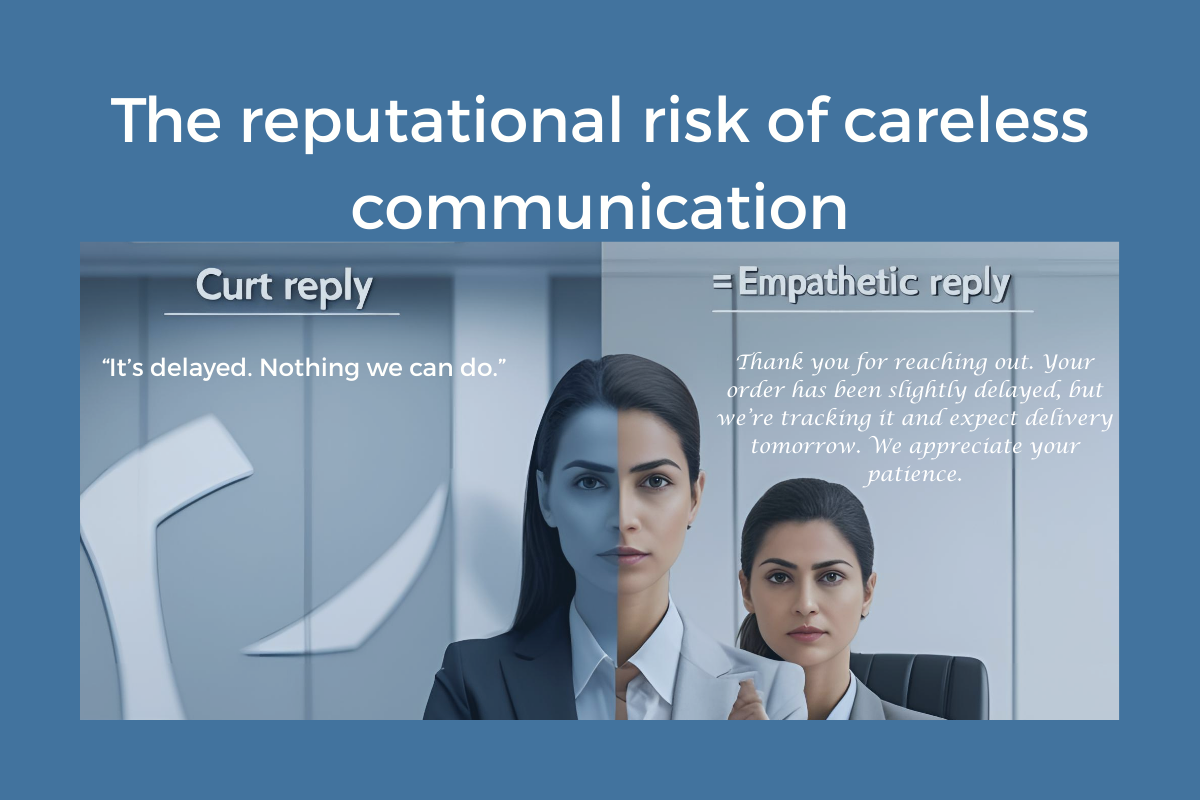Reputation isn’t built only on what you deliver but also on how you communicate. In a region where courtesy and respect are embedded in business culture, tone of voice plays a pivotal role in shaping how your brand is perceived. It is not just about customer service emails or WhatsApp updates – it extends to every touchpoint across your ecosystem, from how you respond to a supplier’s query, to how you brief a journalist, or how you handle an investor’s concern.
The reputational risk of careless communication
What seems like a small slip – a curt email, a brusque reply to a regulator, or a copy-pasted message to a partner – can carry outsized consequences. Stakeholders who feel dismissed are less inclined to collaborate, less likely to trust your commitments, and more prone to sharing their dissatisfaction with others.
This matters even more in a region where trust underpins business success. According to the 2025 Edelman Trust Barometer, 76% of respondents in the UAE say they trust business to “do what is right,” compared to a global average of 62%. That high level of trust is an opportunity – but also a responsibility. A careless tone risks eroding it quickly, especially in the Gulf where service and respect are expected to “go above and beyond.”
Beyond customer service: what tone says about you
Every interaction signals something about your brand. A thoughtful investor update demonstrates transparency and respect. A hasty one-liner to a supplier can be interpreted as dismissive. Even media relations depend on this balance – a journalist who receives polite, professional, and clear communication is far more likely to engage than one who feels brushed off.
Tone is therefore not just about communication style, but about brand identity. It reinforces your values, demonstrates cultural sensitivity, and shows that your organisation takes all stakeholders seriously. Consistency of tone across customers, partners, regulators, and employees builds an ecosystem of trust that directly protects your reputation.
Building a tone of voice guide for all stakeholders
To safeguard reputation, businesses should codify tone as part of their PR and communications strategy. A tone of voice guide ensures that whether you are emailing a client, messaging a supplier, or briefing a journalist, your communication is consistent and aligned with your brand values. Practical steps include:
- Define your brand personality – Decide how you want to sound across audiences: formal, approachable, innovative, or authoritative.
- Set tone standards by channel and audience – WhatsApp replies to a customer might be warm and conversational, but regulatory correspondence may require a more formal tone.
- Create do’s and don’ts – Replace abrupt phrases such as “We can’t” with constructive alternatives like “Here’s how we might address this.”
- Train and refresh regularly – Share examples, role-play situations, and run refresher sessions so that employees apply the guide consistently.
- Localise communication – In the Middle East, incorporating culturally respectful phrases such as “With your permission” or “We appreciate your patience” signals awareness of local norms.
Reputation is shaped in the small moments
In PR, reputation is built – or undermined – in the details. One dismissive WhatsApp message to a customer, a rushed email to a partner, or an unhelpful media reply can undo months of relationship building. Conversely, a thoughtful tone can transform a difficult situation into an opportunity to demonstrate reliability and empathy.
In a region where business thrives on relationships and word of mouth, investing in tone of voice standards across your ecosystem is not a “nice to have” – it is an essential reputational safeguard. By treating tone as a strategic tool, brands can ensure that every message reinforces trust, professionalism, and respect.



